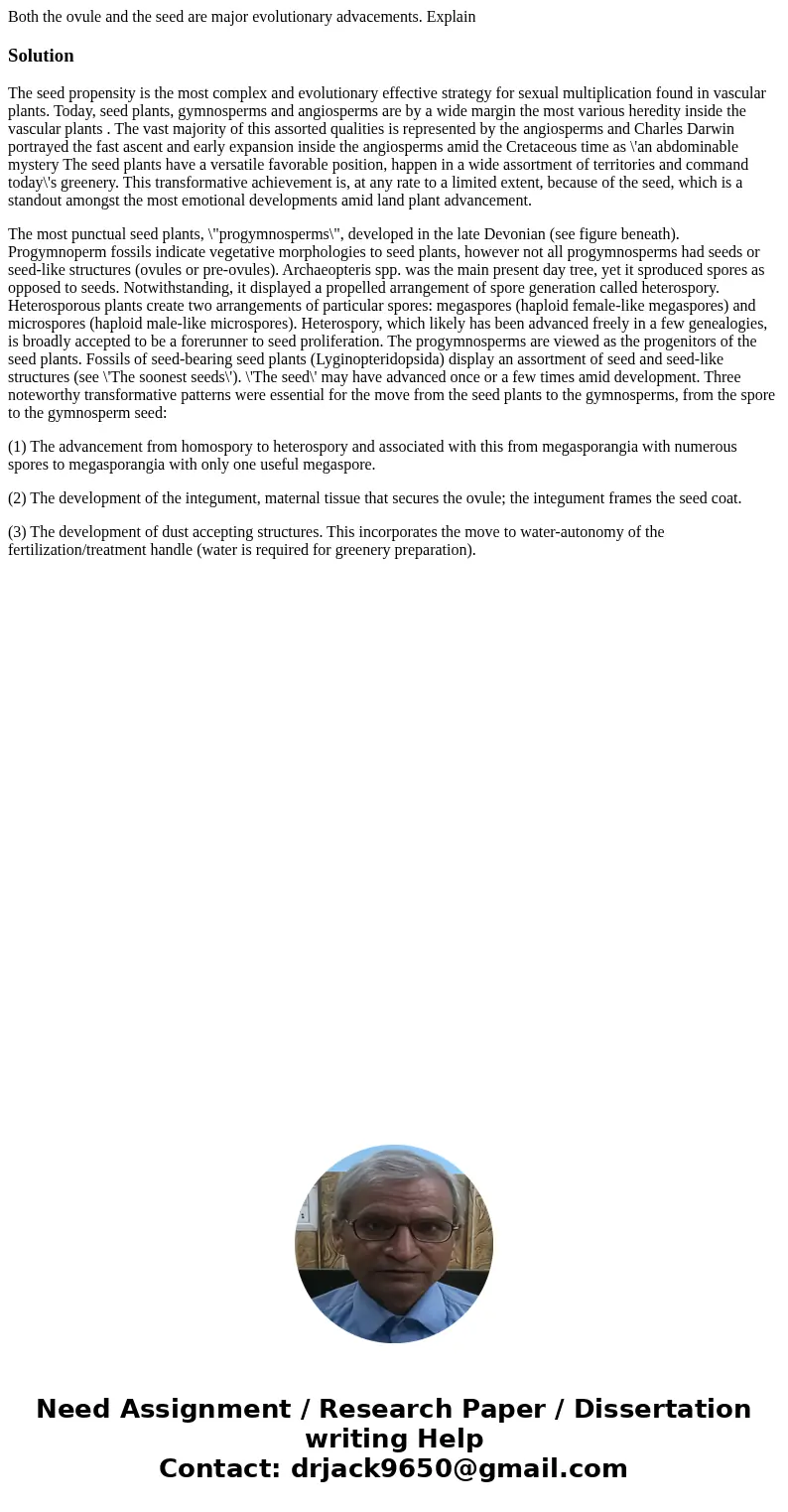Both the ovule and the seed are major evolutionary advacemen
Both the ovule and the seed are major evolutionary advacements. Explain
Solution
The seed propensity is the most complex and evolutionary effective strategy for sexual multiplication found in vascular plants. Today, seed plants, gymnosperms and angiosperms are by a wide margin the most various heredity inside the vascular plants . The vast majority of this assorted qualities is represented by the angiosperms and Charles Darwin portrayed the fast ascent and early expansion inside the angiosperms amid the Cretaceous time as \'an abdominable mystery The seed plants have a versatile favorable position, happen in a wide assortment of territories and command today\'s greenery. This transformative achievement is, at any rate to a limited extent, because of the seed, which is a standout amongst the most emotional developments amid land plant advancement.
The most punctual seed plants, \"progymnosperms\", developed in the late Devonian (see figure beneath). Progymnoperm fossils indicate vegetative morphologies to seed plants, however not all progymnosperms had seeds or seed-like structures (ovules or pre-ovules). Archaeopteris spp. was the main present day tree, yet it sproduced spores as opposed to seeds. Notwithstanding, it displayed a propelled arrangement of spore generation called heterospory. Heterosporous plants create two arrangements of particular spores: megaspores (haploid female-like megaspores) and microspores (haploid male-like microspores). Heterospory, which likely has been advanced freely in a few genealogies, is broadly accepted to be a forerunner to seed proliferation. The progymnosperms are viewed as the progenitors of the seed plants. Fossils of seed-bearing seed plants (Lyginopteridopsida) display an assortment of seed and seed-like structures (see \'The soonest seeds\'). \'The seed\' may have advanced once or a few times amid development. Three noteworthy transformative patterns were essential for the move from the seed plants to the gymnosperms, from the spore to the gymnosperm seed:
(1) The advancement from homospory to heterospory and associated with this from megasporangia with numerous spores to megasporangia with only one useful megaspore.
(2) The development of the integument, maternal tissue that secures the ovule; the integument frames the seed coat.
(3) The development of dust accepting structures. This incorporates the move to water-autonomy of the fertilization/treatment handle (water is required for greenery preparation).

 Homework Sourse
Homework Sourse